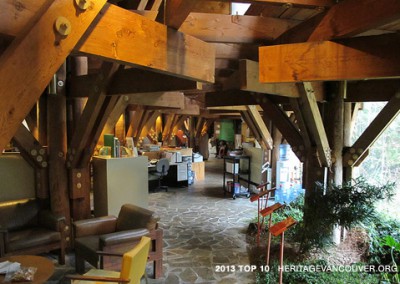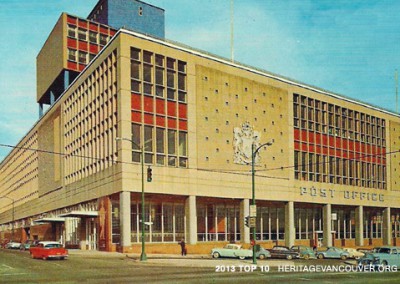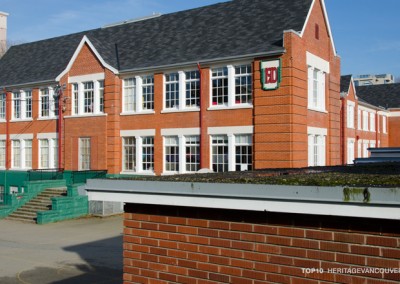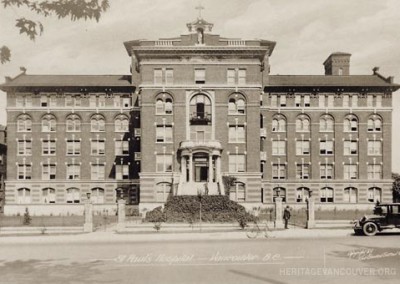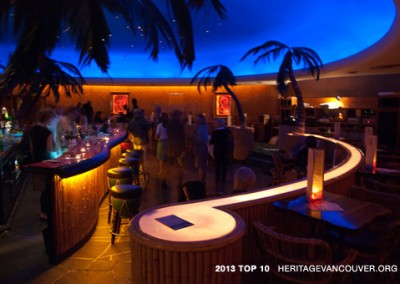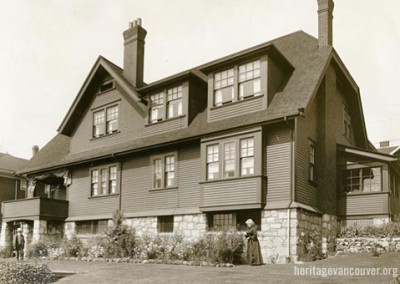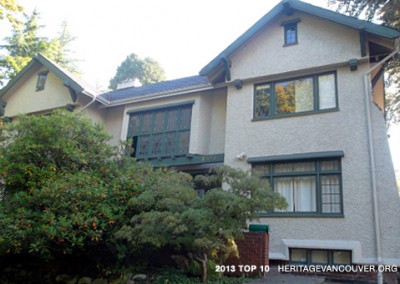The unique low-scale historic character of the streetscape along these key blocks of downtown Granville Street continues to be threatened by development pressure. The fact that this is the fourth successive year that this stretch of Granville Street has been on the Top Ten Endangered List recognizes that this threat remains chronic.
This year we present a review of the principles underlying the current planning regime for this five-block section of Granville Street, and why there continue to be threats to this collection of historic buildings.
Threat
What is the threat to downtown Granville Street?
The unique low-scale character of the historic streetscape along these blocks is threatened by a desire to “clean up” the area, coupled with proposals for much higher tower forms of development that would destroy the existing scale of the streetscape. Recent City policies for affordable housing have encouraged spot rezonings at a much higher density than allowed by the existing zoning.
In addition, many buildings that define the character of the 800-1200 blocks of Granville Street are not on the Vancouver Heritage Register. This collection of buildings was listed on Heritage Vancouver’s 2011 and 2012 Top Ten Endangered Sites. In 2012 one of these buildings, the Farmer Building (1922) at 801 Granville Street (Maclure & Lort, Architects) was demolished.
The significant building interiors along Granville Street, including the remarkable Commodore Ballroom and the Orpheum and Vogue Theatres, are not legally protected, and could be radically altered. The Commodore and the Vogue also are built at a very low density, and could also be threatened by redevelopment. Heritage character can also be lost through ignorance and neglect, such as the unique and historic terrazzo apron of the Vogue Theatre – a National Historic Site – that was destroyed by the City when Granville Street was repaved.
The City of Vancouver currently has few incentives to offer building owners to help defray the costs of exterior and interior rehabilitation. The City’s Heritage Density bank remains frozen, and incentives such as façade grants and property tax relief that are available for the Gastown and Chinatown Historic Areas are not applicable to Granville Street. We are at a critical point where Vancouverites will see much of Granville’s historic streetscape disappear unless it is recognized as a valuable asset to be conserved and revitalized.
Significance
Why is downtown Granville Street significant?
Growth in the downtown core was rapid following the Great Fire of 1886, and a number of new permanent buildings were built by 1889. That year, the original Granville Street Bridge was finished to provide access to emerging suburbs to the south. In 1890, the first lines of an electric streetcar system were laid on Hastings, Main and Granville Streets, which was a catalyst for a commercial and housing boom.
It was during the Edwardian era that Granville Street gained significance as a business centre. The architectural firm of Parr & Fee held extensive lands on Granville Street at this time, and designed and developed a number of large apartment hotels in a cohesive style that gives the street its character. After World War One, prohibition forced the closing of local saloons, making hotels less profitable. Stagnation left a mix of densely developed sites next to one-storey buildings and vacant sites, resulting in a “saw tooth” skyline and street profile, not radically altered since 1913.
Granville Street was also established as Vancouver’s theatre district early in the city’s history. The growing wealth of the 1920s was manifest in construction of more and larger theatres and entertainment halls. Massive neon signs proliferated, and Granville Street became known as the ‘Street of Lights.’ Renewed building activity ended with the Great Depression in 1929, but the demand for entertainment and distraction drove the construction of some grand movie palaces. With the development of neighbourhood shopping malls after the end World War II and the removal of streetcar lines in the 1950s, stagnation set in, until some recent demolitions and redevelopment.
History
The current planning regime covering Granville Street’s 800 to 1200 block resulted from a much more extensive planning process put in place for Downtown South. The Manager’s Report dated May 2, 1991 asserted that, “The Vision for Granville Street is to create a strong retail core for the Downtown South Community building on its existing heritage character.” It recommended the transfer of density through rezoning of other sites and respect for Heritage. “The general intent of these guidelines is to assist in the creation of a distinct urban character for the mixed use areas of Granville Street” and to ensure a high standard of livability. “In the future it is proposed that Granville Street become the Commercial Centre of the new community and continue to be a focus for entertainment.” Council received delegations, including one by Michael Kluckner representing the Community Arts Council of Vancouver’s Heritage Committee, the forerunner of Heritage Vancouver.
On May 16th, 1991, Council passed a series of decisions including the following: “Encourage the revitalization of Granville Street and the retention of heritage buildings and streetscapes.” Discussion was recorded on how best to preserve these five blocks containing 22 heritage buildings, noting that it was “important to retain the street scale on Granville Street; a low scale, highly articulated street form with heritage and view corridors.” Council concluded, “Save heritage buildings including those containing single room occupancy units with the wider transfer of density.” It supported density bonusing, including “a heritage rehabilitation bonus.” It endorsed “bona fide heritage buildings to be saved.” Also it endorsed a form of development for Granville Street “to achieve a heritage image with medium density up to 3.5 FSR and mid-rise buildings up to 70 foot height at the property line.”
While the sound regulatory scheme put in place in 1991 has largely been protective so far, current policies that can override the existing zoning envelope are causing significant concern about the retention of the Street’s historic character, pedestrian focus and livability of the surrounding neighbourhoods.
Position
Heritage Vancouver’s position
Heritage Vancouver supports the preservation and revitalization of the unique character of historic Downtown Granville Street. Despite its decline, the streetscape has a striking ensemble of significant buildings that tell an important story of the early development of the city centre. With heritage-led revitalization, Downtown’s Granville Street would once again take its place as one of Vancouver’s great streets, with the strong retail core envisioned in 1991.
This can only be accomplished by formally protecting historic human-scale buildings that are on the Heritage Register, as well as recognizing those sites which that heritage merit but are not yet listed. It is unlikely that these structures will be retained without heritage designation or the offering of significant conservation incentives, regardless of the relatively low allowable densities under the existing zoning.
In recognition of the historic importance of this area of Granville Street, Heritage Vancouver recommends that the City of Vancouver:
- Initiate a comprehensive heritage and urban design study of the 800-1200 blocks of Granville Street to retain and enhance the invaluable historic resources that define the street’s character.
- Work with the community to undertake a full review of heritage incentives that could be used to conserve this historic building stock, such as density transfers, property tax relief and grants.
Also, view our Top Ten Endangered Sites entries for Granville Street: 2010, 2011, 2012
Actions
Write Mayor and Council expressing your concerns about the ongoing erosion of Downtown Granville Street’s fragile heritage resources, along with the Vancouver Heritage Commission, which is an advisory panel for Council, at:
mayorandcouncil@vancouver.ca
heritage.commission@vancouver.ca


